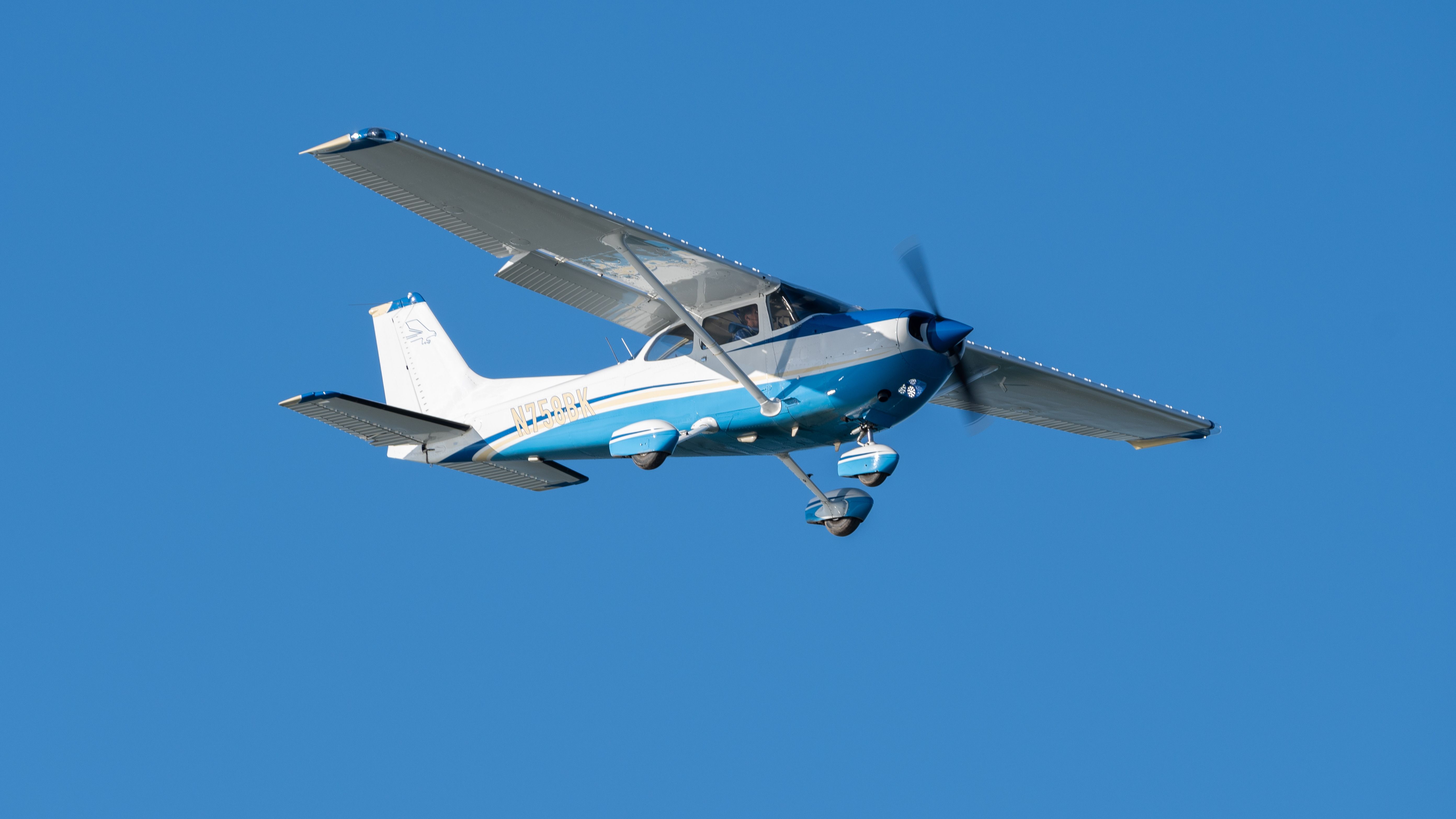The Cessna 172 is one of the most iconic and widely produced aircraft in aviation history, known for its versatility, ease of handling, and durability.
Introduction and Early Models (1956–1960s)
The Cessna 172 was first introduced in 1956 as an evolution of the Cessna 170, a tailwheel aircraft. The 172 was designed with a tricycle landing gear, making it more user-friendly, especially for novice pilots, and it quickly became popular in general aviation.
- Original Model (1956): The first model had a simple design, with a straight tail and a six-cylinder Continental O-300 engine, producing around 145 horsepower.
- 172A (1960): Featured a swept-back tail, which gave the aircraft a more modern look and slightly improved aerodynamics.
- 172B (1961): This model introduced a shorter nose and streamlined cowling, and the wingspan was slightly modified.
- 172C (1962): Added optional amenities like an autopilot and introduced adjustable seats for pilot comfort.
1960s–1970s: The Skyhawk and Technological Advancements
In 1963, Cessna introduced a deluxe version of the 172, called the Skyhawk. The Skyhawk had additional features such as more luxurious interiors and optional avionics.
- 172F (1965): Featured electric flaps, improving on the manual flap lever in previous models. This model was also the first to be used for military training under the designation T-41 Mescalero.
- 172I (1968): Introduced the first Lycoming O-320 engine, producing 150 horsepower, which became the standard engine for future 172 models.
- 172L (1971): This version had a tubular landing gear strut to improve robustness and landing smoothness.
- 172M (1973): Introduced a drooped wing leading edge, marketed as the “Camber-Lift” wing, which improved low-speed handling and allowed for shorter takeoff distances.
The 1980s: Increased Power and Refinement
In the late 1970s and 1980s, the Cessna 172 saw several changes to improve performance and usability, including new engines and features.
- 172N (1977): Featured a Lycoming O-320-H2AD engine producing 160 horsepower. It had improved performance but suffered from reliability issues, leading to engine changes in later models.
- 172P (1981): Returned to the more reliable Lycoming O-320-D2J engine, also producing 160 horsepower. This model was designed with improved corrosion resistance and increased fuel capacity.
By the mid-1980s, production of many general aviation aircraft, including the 172, slowed due to economic factors and increased liability insurance costs. Cessna halted production of the 172 after 1986.
1990s Revival and the 172R & 172S Models
After a decade-long hiatus, Cessna resumed production of the 172 in 1996 due to improved regulations and demand in the general aviation market.
- 172R (1996): Featured a fuel-injected Lycoming IO-360 engine producing 160 horsepower. This model focused on improved comfort and avionics, as well as a quieter cabin.
- 172S Skyhawk SP (1998): An upgrade from the 172R, it had a more powerful 180 horsepower Lycoming IO-360 engine, which offered better climb performance and cruise speed. The Skyhawk SP also became a popular trainer and private aircraft, with enhanced avionics options.
Modern Era: Glass Cockpits and Technological Upgrades (2000s–Present)
The 2000s marked the transition of the Cessna 172 into the digital age, with the introduction of glass cockpits and other modern avionics.
- 172S G1000 (2005): Cessna began offering the Garmin G1000 glass cockpit as a standard option. This greatly improved situational awareness and navigational capabilities with advanced flight instruments, GPS, and autopilot integration.
- 172 JT-A (2014): A diesel-powered variant featuring the Continental CD-155 engine, burning Jet-A fuel. This version offered improved fuel efficiency, particularly for regions where Avgas (aviation gasoline) is expensive or scarce.
- Cessna 172S NAV III: Introduced advanced avionics and autopilot systems, making it more attractive for modern flight training and private use.
Legacy and Continuing Popularity
The Cessna 172 remains a favorite among flight schools, private pilots, and commercial users. Over 44,000 units have been built, making it the most produced aircraft in history. Its combination of simplicity, reliability, and ease of use has made it an enduring success for nearly seven decades. Cessna continues to refine and update the 172, adapting it to modern avionics, engines, and safety standards, ensuring its place in aviation for years to come.


